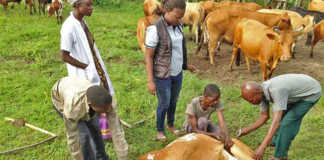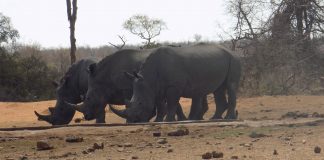
Photo: Johan Marais
“Snakes are on the move and we have already received numerous requests for snake removals already. I urgently advise members of the public not to try and handle any snake and to rather make use of the African Snakebite Institute’s app with nearly 800 registered snake removers. It is extremely dangerous for any untrained person to handle any snake,” he added.
READ Could reptiles fill the food supply gaps?
During winter snakes eat very little, if at all. As soon as temperatures increase, the animals will start moving about in search of food such as rodents, lizards, frogs and birds. This results in snakes moving towards human dwellings because of the ample sources of prey.
All species, venomous and non-venomous, are active at the moment, such as the non-venomous herald, mole and egg eaters. The venomous species include, among others, mamba, puff adder, and the seven cobra species that occur in Southern Africa.
Marais issued a special warning about the little-known stiletto snake, a small, highly venomous snake that accounts for many snake bites in summer.
“The snakes are often confused with harmless snakes and picked up. Stilettos are small, non-descript snakes that average around 30cm to 40cm in length, are dark-brown to blackish in colour and spend most of their lives underground. They usually emerge in the early evening, especially after summer rains, and often end up in swimming pools. Stilettos are often mistaken for mole snakes, even though they do not resemble mole snakes at all,” he said.
READ Strategies for limiting livestock losses to predators
The big danger lies in the stiletto’s fangs and potent cytotoxic venom. If grabbed behind the neck, the snake will twist it head sideways with one fang protruding and stab it into a thumb or finger. Otherwise, if caught at mid-body, the snake will thrash around with its fangs sticking out and the person catching it will get bitten once or twice.
The species does not occur in the Western Cape, most of the Eastern Cape and most of Namaqualand, but is common in KwaZulu-Natal, Gauteng, Mpumalanga and Limpopo, as well as much of North West, Zimbabwe, Botswana and northern Namibia.












